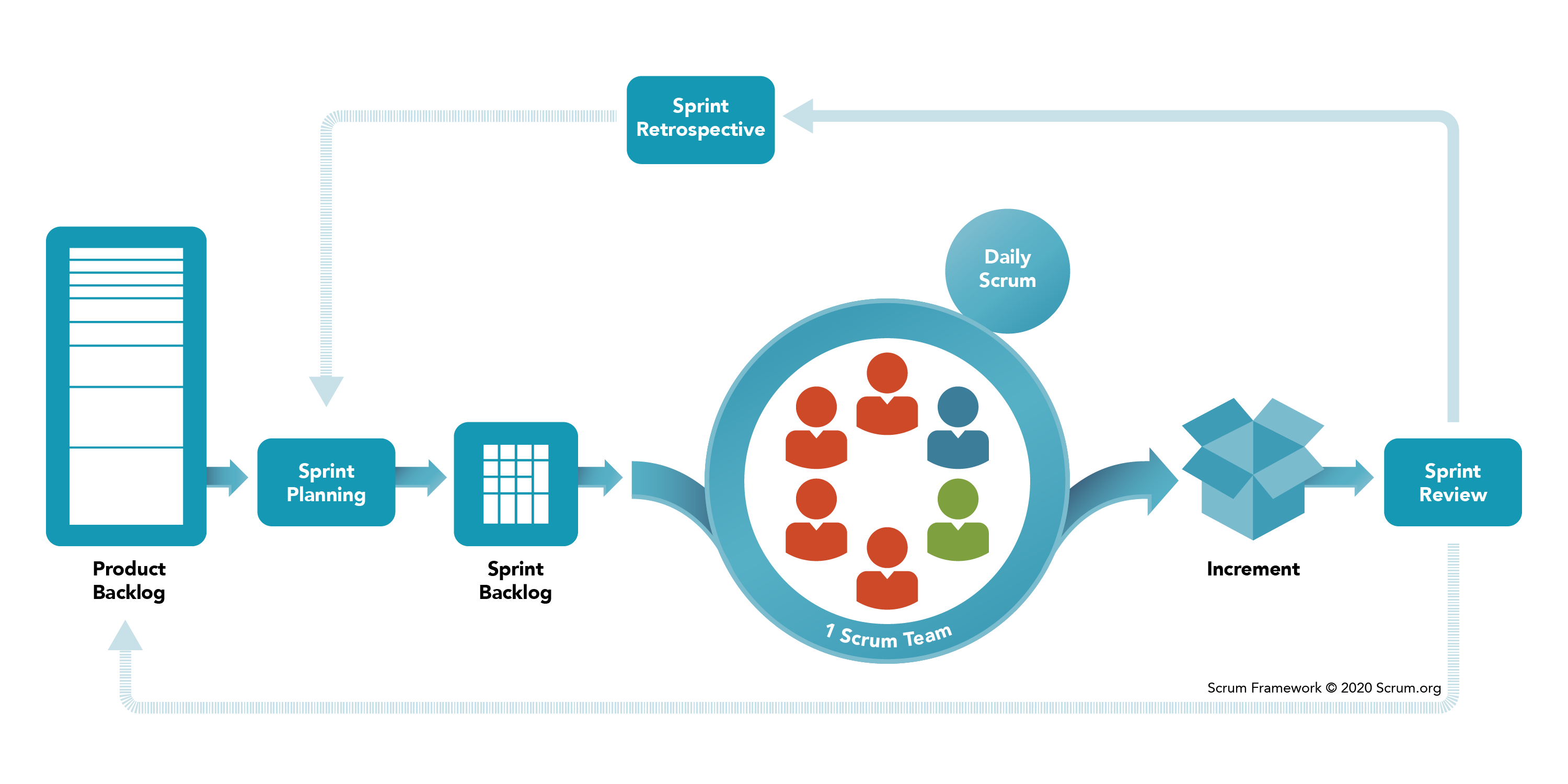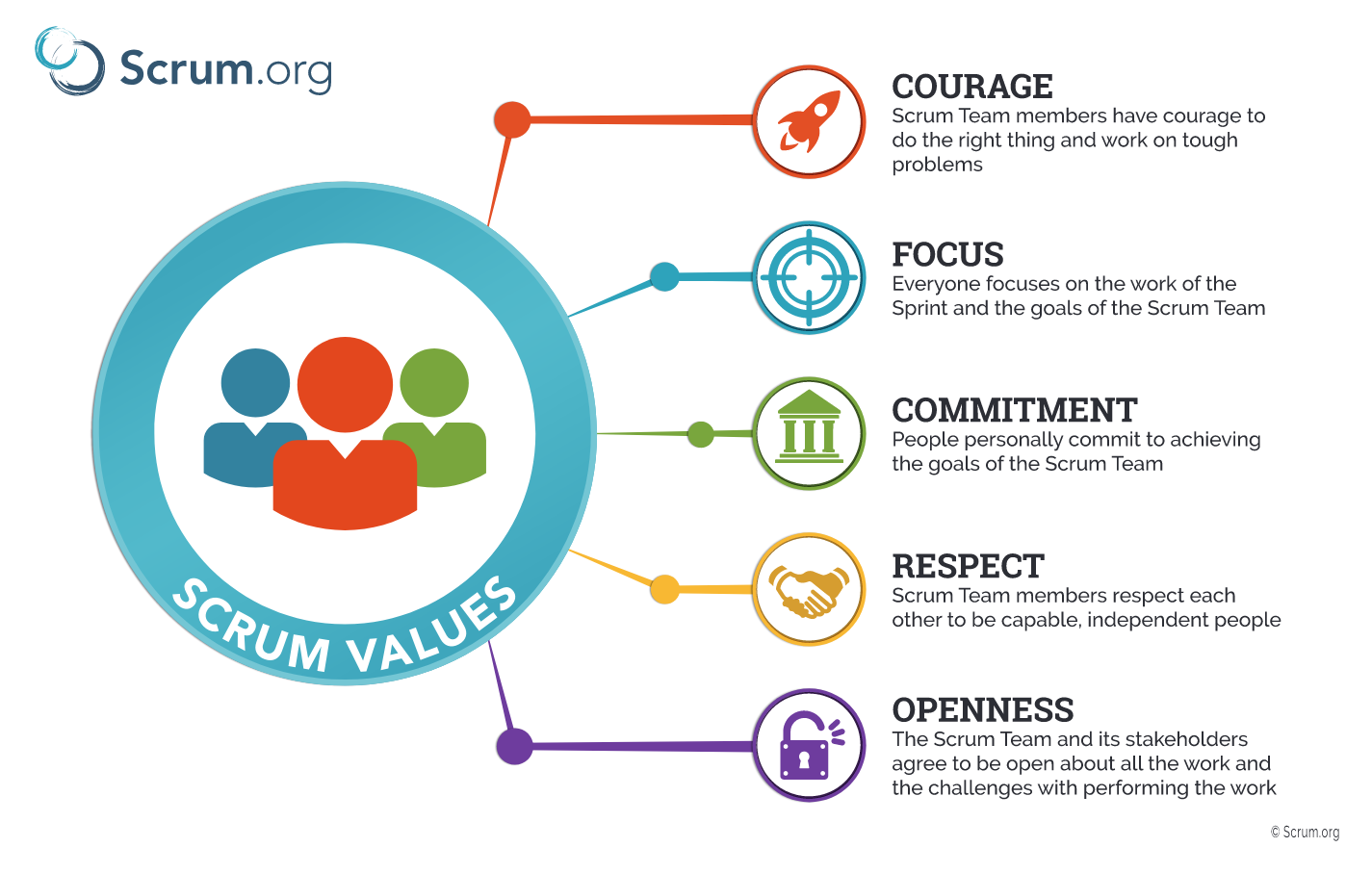Scrum
According to the official definition, “Scrum is a framework within which people can address complex adaptive problems, while productively and creatively delivering products of the highest possible value.”.
Scrum is a simple, empricial framework which helps us deal with unpredictable, complex problems.

Scrum implements an empirical process where progress is based on observations of reality, not fictitious plans.
The Scrum Framework
Scrum Values

Scrum Team
Small team of people, consists of:
- Scrum Master: TBC
- Product Owner: TBC
- Developers: TBC
Scrum Pillars
- Transparency: This means presenting the facts as is
- Inspection (by the Scrum Team): Check the product, processes, people, and practices and you work.
- Adaptation: Continuous improvement base on the result of Inspection
Scrum Events
The main goal of these events is to create regularity and minimize the need for meetings.
- Sprint: It is the heart-beat of scrum, which encompasses all the work necessary to achieve the Product Goal. It's a fixed-length event of one month or less.
- Sprint Planning: Initiates the sprint by laying out the work to be done.
- Questions:
- Why is this sprint valuable?
- What can be done this sprint?
- How will the chosen work get done?
- Outcome: Sprint Backlog
- See: Definition of Done
- Questions:
- Daily Scrum:
- Purpose:
- Inspect progress toward Sprint Goal
- Synchronize activities
- Plan for the next 24 hours
- Team members often meet immediately after the Daily Scrum for detailed discussions or replan.
- How:
- It's 15 minutes (timebox) to keep everyone focused
- It happens at the same time & location to reduce complexity
- It happens everyday
- It's by developers and for developers
- It's not a status meeting (update on the tasks they've been working on)
- Purpose:
- Sprint Review:
- Inspect the outcome of the Sprint & determine future adaptation
- Progress toward Product Goal is discussed with stakeholders
- Maximum of 4-hour timeboxed event for a 4-week Sprint
- See: Backlog Refinement
- Sprint Retrospective:
- Inspect individuals, interactions, processes, tools, and their Definition of Done.
- Identify the most helpful changes to improve effectiveness.
- It's timeboxed to a maximum of 3 hours for a 4-week Sprint.
Scrum Artifacts
Scrum Artifacts enable inspection & adaptation by providing transparency on the work and the value.
- Product Backlog:
- Definition: An emergent, ordered-list of what's needed to improve the product.
- Commitment: Product Goal, which is a future state of the product that helps Scrum Team to plan their future Sprints. It's either fulfilled or abandoned.
- Sprint Backlog:
- Definition:
- Sprint Goal (Why)
- Set of Product Backlog Items (What)
- Actionable plan for delivering the Increment (How)
- Commitment: Sprint Goal, which is a single commitment for the sprint. It has flexibility in terms of the exact work needed to achieve it.
- Definition:
- Increment:
- Definition:
- Concrete stepping stone toward the Product Goal.
- Each increment is added to the previous
- All increments should work with each other
- Commitment: Definition of Done, which is a formal description of the minimum quality required for an increment to be accepted.
- Definition:
Scrum works not because it has three roles, five events, and three artifacts, but because it adheres to the underlying Agile principles of iterative, value-based incremental delivery by frequently gathering customer feedback and embracing change.
External, introductory resources
- What is Scrum?: A short overview of what Scrum is
- Scrum Glossary: A short Scrum glossary with the most essential terms
- Scrum Values: Practical examples of applying Scrum Values
More external resources
Scrum in IxDF
TBC
🦄